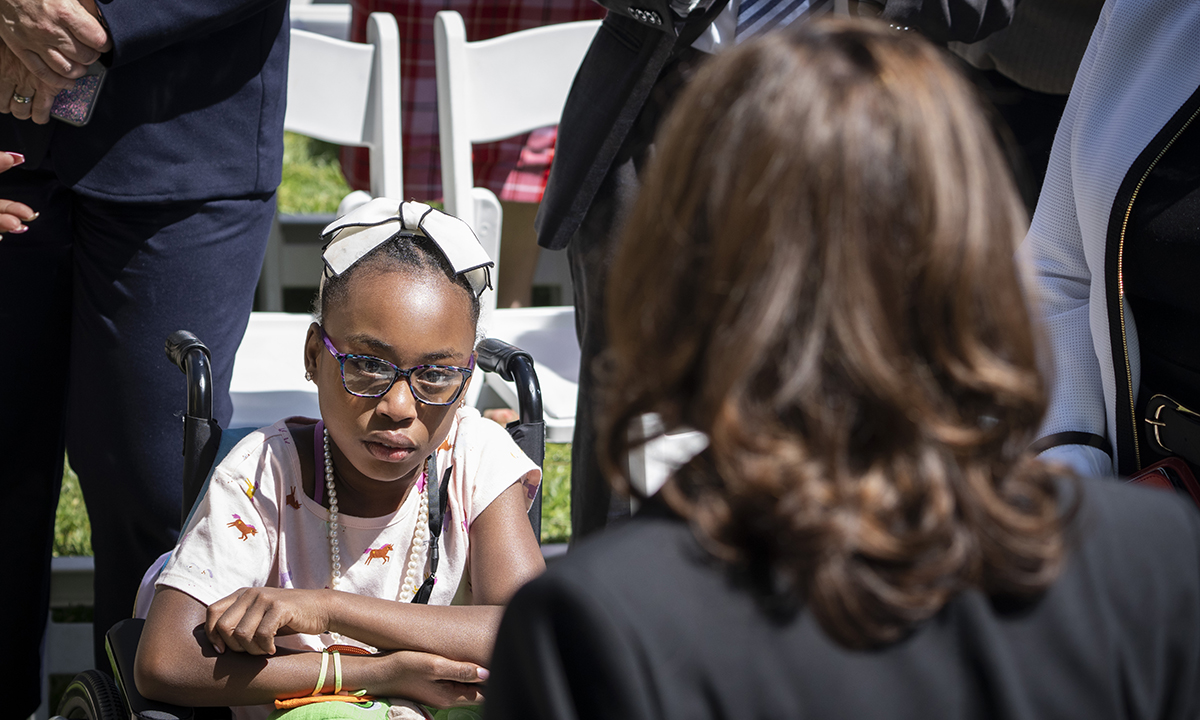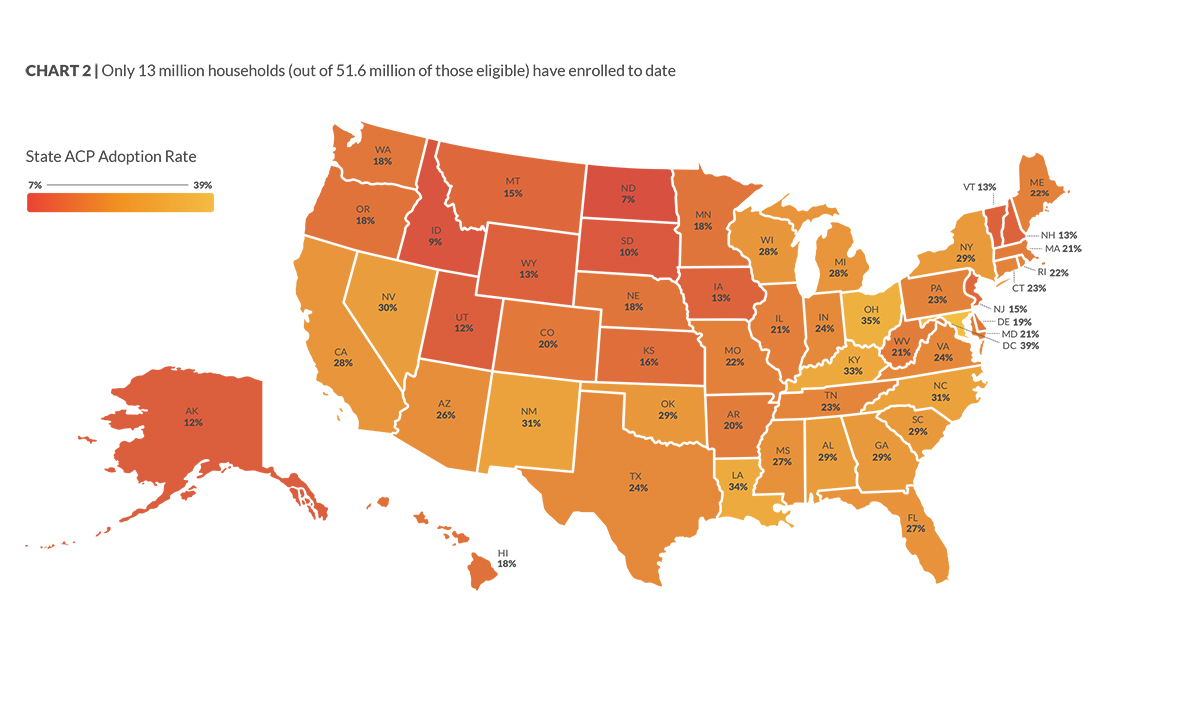Report: Almost 40M Households Passing on Internet Discount
Last year’s infrastructure law included a $30 broadband benefit, but a lengthy enrollment process is hurting participation

Get stories like this delivered straight to your inbox. Sign up for The 74 Newsletter
Just a quarter of eligible households are taking advantage of a federal program to provide students with free or inexpensive internet access, according to a new report released Tuesday.
The $14.2 billion Affordable Connectivity Program, part of the infrastructure funding package President Joe Biden signed almost a year ago, provides a monthly $30 broadband benefit for low-income families and a one-time $100 voucher for a device. Almost three-fourths of eligible families live in a community where internet service providers are offering free high-speed service for those who qualify.
But distrust in government and a lengthy application are hampering efforts to increase enrollment, according to the report from EducationSuperHighway, a nonprofit that helps make internet service more affordable for students. Currently, only 13 million of the 51.6 million households eligible have enrolled.
The Federal Communications Commission, which runs the program, asks for a “heavy amount of documentation” from applicants, said Evan Marwell, CEO of the organization. That means many don’t complete the process and almost half of the applications are rejected due to incorrect documentation.
“Even though the goal is to close the digital divide, the [agency’s] number one priority is to make sure there is no waste, fraud and abuse in the system,” Marwell said.
Officials have reason to be cautious. Families can apply for the program if a child in the family is the only one eligible. But last month, the agency’s inspector general released findings on an Oklahoma case in which internet service providers used the name, birthdate and social security number of the same 4-year-old child to apply for the benefit over 1,000 times and claimed over $365,000 in reimbursements. The case wasn’t isolated, according to the press release.

The FCC has been working with organizations in states to promote the benefit and launched a $10 million pilot program in August to reach families who already receive housing subsidies. Paloma Perez, press secretary for Chairwoman Jessica Rosenworcel, said the agency seeks feedback from eligible users and is “continually exploring ways to improve the application and enrollment process based on their input.”
Officials have also recruited 40,000 “outreach partners” and hosted more than 700 online and in-person local events to promote the program, she said.
School districts, Marwell added, play a vital role in simplifying the process by informing families whose children qualify for free or reduced-price meals that they automatically qualify for the internet discount.
“With one fell swoop, they can overcome that document issue,” he said.
He pointed to districts in Worcester and Springfield, Massachusetts, as examples of strong efforts to inform families about the program. As a result, enrollment in those two cities is two times the statewide participation rate of 19%. Cities reaching at least 40% enrollment include Buffalo, Cincinnati and Detroit.
Another barrier to participation is that the FCC’s application, which can take at least a half hour to complete, isn’t mobile-friendly. A lot of families who lack broadband at home are only accessing the internet through their phones, Marwell said. And it’s only available in English and Spanish.
“The site hasn’t been designed with the people who most need it in mind,” Marwell said.
But Perez said the agency has enhanced the application to make applying by phone more user-friendly
Along with the report, EducationSuperHighway launched a new website that tells parents which documents to gather before applying. The states with higher participation rates, like Ohio, Kentucky and Louisiana, Marwell added, have been better about sending letters to families receiving nutrition assistance to let them know they qualify
Marwell applauded major internet companies like AT&T and Verizon for offering $30 plans so families don’t have to pay additional fees.
The remaining challenge is that companies have been more effective at getting the word out to existing customers who qualify than to those who don’t have access.
States and cities, “really need to do the work to get to the unconnected,” Marwell said. “If all you have is access on your phone, you’re unconnected.”
Get stories like these delivered straight to your inbox. Sign up for The 74 Newsletter

;)
